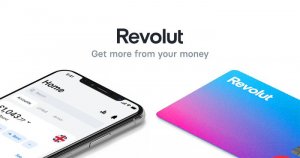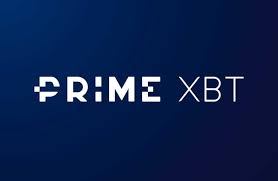Retail FX deposits still way above those of traditional funds and investments, but at what cost?
New retail customers are vital to retail FX firms. We investigate how the initial deposit vs lifetime value and acquisition cost for retail firms compares with what is being recommended by traditional investment companies – and debunk popular belief. Our findings show a bright future, if handled correctly

A longstanding anomaly for which the solution is yet to be completely discovered is the cost of acquiring new direct retail customers compared to the initial client deposit amount and lifetime value, that being the length of time that a newly acquired customer trades before either switching brokers or cutting losses and ceasing to be a customer.
Other silent anomalies in today’s retail FX trading environment center around execution practices and the extremely difficult variable to monitor from the outside, such as slippage, however this is a secondary concern to many first time retail clients, as it requires some degree of commitment for many new entrants to retail trading to come to terms with the technical topography of electronic trading.
New customers and novice traders, however, are of great interest to retail FX companies, largely due to the continual need to onboard new customers to replace those who no longer trade.
The metrics are quite interesting. According to FinanceFeeds extensive research, the average deposit for first time retail customers to a MetaTrader 4/5 retail FX brokerage globally is $3,800. It costs between $1,300 and $1,500 to acquire one client, and the average customer lifetime value is 6 months.
In the United States, the average deposit amount is $6,600, and the lifetime value is almost a year, however with just two companies left, and a different client base which largely comprises experienced traders with diversified portfolios who are used to the futures sector, thus is less of a metric to consider when analyzing the return on investment from attracting new clients.
This week, British experts in traditional investments have been airing their opinions with regard to how much retail investors should set aside for their first foray into trading non-bank financial services.
Rather surprisingly, the amounts suggested by longstanding traditional investment firms are considerably lower than FX industry data which very clearly shows the average deposits made to FX firms across the world.
Gavin Haynes, Managing Director of British independent financial advisory firm Whitechurch Securities stated that £50 per month is a ballpark figure for those wishing to invest regularly, whereas £1000 is a starting point for a lump sum investment.
“Traditionally people will go down the route of investing in funds as their first port of call. It can provide a good level of diversity through collective investing, and you get the expertise of a professional manager” he told mainstream media in Britain.
This is quite remarkable, as it is a very small figure, especially when considering the use of a portfolio manager. Comparatively, FX brokerages with IBs that refer managed portfolios are used to onboarding clients attached to MAM accounts, many of whom are investors rather than traders (the IB trades the accounts), with deposit amounts running into the millions in some cases.
It is very common in Western markets for small to medium sized brokers to onboard a new managed portfolio with a $50,000 deposit, whereas for Chinese companies, several million being referred to Western brokerages and approximately 90,000 lots per month being traded is absolutely normal.
Mr Haynes continued to explain that his advice to new investors is that if they plan to begin investing in one asset class, they should make sure to diversify across shares, government and corporate bonds, and property. That is some feat with just £1000.
Adrian Lowcock, investment director at asset manager Architas, says the minimum investment levels on online platforms serve as a guide to how much money you need to get started.
He agrees with Mr Haynes that £50 a month is preferable if you want to invest regularly. When it comes to lump sums, he thinks it’s fine to start with £500 if you want to invest in funds because there are no dealing costs.

However, his opinion is that investors should have at least £1,000 if they want to buy shares because that involves shelling out fees every time you make a transaction.
For an FX brokerage to consider operation with such low initial deposit amounts is anathema.
The large difference between first time customers of retail FX firms and those making their first steps in other traditional assets, is the length of time over which they remain customers.
Many asset management companies in Britain expect a new customer to remain on their books for at least 5 years, and in many cases would remain longer.
Mr Lowcock said “Think decades, not five years, It’s your long-term future, not saving a deposit for a property. Five years is the industry standard, but is fairly short term if you look at what goes on in markets in terms of volatility and economic cycles.”
This is a very expensive and high maintenance business. Dealing on a regular basis with clients with a low investment value over a very long period of time is stagnating at the very least, whereas FX firms are able to maximize their opportunities, along with their client’s returns, quickly.
There is one thing to consider, however, that being the steady nature by which traditional investments are portrayed.
The deeply conservative image of most traditional financial services companies is something which rings well with buyers in traditional markets such as those in provincial Britain.
The reality is, however, that diversified asset classes invested in by traditional firms are no less safe than the several thousands of instruments available on MetaTrader 4 or Britain’s proprietary CFD platforms, and a lot less transparent.
Investing via a financial adviser does not provide a real-time, continual view via a trading platform of all instruments, their prices and exactly how well the client’s portfolio is performing. It may well be that some of the asset classes are restrictive or obsolete, and with just £1000, there is not enough buying power in the market to make headway, hence risk of loss is high.
So much attention by the media and regulators has been directed at leveraged margin FX, yet the modernity and direct market access to extremely liquid global asset classes and currencies is empowering to retail customers, whereas traditional investments can be a millstone.
It is therefore all about perception.
Given that the majority of retail FX traders are between the ages of 25 and 40, the ‘Millennials’, those growing up in the millennial years, are very soon to become the target market for most of the world’s retail brokers.
FX brokerages over the last five years have concentrated many resources on developing very advanced, fully functional smartphone applications that traders had to get used to, with the brokerage considering it a means of generating more volume and engaging traders on a longer term basis, however the next generation of traders will not have to be educated on how to use new technology that brokerages are encouraging them to use, it will indeed be the other way round, where the tech-savvy young trader will demand specific technology, custom functionality and accessibility from their brokers, with absolutely no education on how it works required.
One particular company who showed full understanding of this recently is CBOE LIVEVOL, which is very interesting because the Chicago Board Options Exchange’s data has been traditionally aimed at an institutional and proprietary trading audience, befitting of its Chicago derivatives exchange origins.
The company began to embark on aiming the new market data service toward retail traders, however it has done so by modeling it on the Amazon style method of purchasing, therefore completely demonstrating its commitment toward attracting young users who are familiar with the shopping carts and checkouts of e-commerce sites.
Financially and technologically astute Millennials, of which there are tens of thousands across the world as technology and financial markets have been intrinsically connected during the course of most of the younger generation’s formative years, will use electronic platforms for absolutely everything they do.
Ashraf Ebid, who announced in June last year that he had been appointed Global CEO of Global Market Index, explained to FinanceFeeds “Millennials demand far superior and easier to use Mobile apps which were not designed originally for the desktop and later jammed into a small screen for mobile. They require no typing and no menus, simply smooth ‘touch and operate’ apps designed specifically for mobile with no legacy designs moved over from the desktop legacy designs.”
This is something traditional financial advisers do not provide in many cases, the exception perhaps being Hargreaves Lansdown, however that is a vast company which can be considered an electronic trading firm in its own right, with its own proprietary Vantage platform.

Interestingly, Global Market Index which is owned by GMI Group of Companies also includes a joint venture between CFH and GMI called CFH Systems China, China being a particularly important region for catering for Millennials, as during many travels across China’s second tier development towns, the use by very young people of the very latest trading technology is rife.
Mr. Ebid, who is a very widely recognized senior FX industry executive with leadership positions at GKFX, and GFT forming major parts of his career further explained “for the most part, did not really innovate any totally new client facing technology since the early 1990’s. If we look at all trading platforms in the world today, they pretty much look the same with a few minor bells and whistles differences.”
“They are, for the most part, quite complicated to use, for most people. They were designed by traders for traders, which is what most online brokers are proud of. Most brokers even brag and market how complex their client facing software is. The only major problem is most people in society are not professional traders and yet most people who are not professional traders would love to learn how to trade and participate in trading the financial markets. If we add up professional traders plus semi professional traders they will account for less than 5% of people in society. So how can we include the other 95% of society who would love trade if there is an easy, intelligent and uncomplicated ways for them to learn how to trade” – Ashraf Ebid, CEO, Global Market Index.
Mr. Ebid continued “Nothing on the market today offers a real easy set of tools for new traders to learn how to research, analyze, trade and manage their own trading risk.”
“They all require spending endless days and nights fighting with the current available difficult tools to try to somehow wing it and make a profitable trade. Most available online trading platforms today are highly algorithmic and filled with very confusing and hard to analyze technical charts and news feeds. Hence, they are quite frustrating and make most people feel like they are shooting in the uncertain dark with hard earned monies on the line and a real chance to lose money” he said.
“Worst case, some new traders are even forced to blindly follow and copy the trades of unproven and extremely risky trading strategies created by other unknown traders. They hope to solve the financial markets trading puzzle but they risk and most likely end up with disastrous outcome” explained Mr. Ebid.
“It is time to innovate much easier and modern ways to teach most non professional clients how to trade and offer them effective and easy to use tools which can truly help improve their chances to make money” – Ashraf Ebid, CEO, Global Market Index
“The old and useless sales and marketing approach in the online trading industry, which has been used for the past 25 years, is also not helpful at all to most clients who are not professional traders” says Mr. Ebid.
“It is time to change the sales and marketing approach in the online trading industry to make it much more helpful and useful to clients by teaching them and continuously adding real useful value to their trading experiences than the simple empty promises like “come over here, we are the best, trade with us and by the way, you are on your own”.
“It is high time for the stagnant and frozen online trading industry to be transformed and disrupted like many other industries have been disrupted in the last few years using truly revolutionary and intelligent new technologies and value added and sincere sales and marketing approach” is Mr. Ebid’s conclusion.
During a recent visit to Saxo Bank to see the developments that have made it possible for all assets to be traded from a single, device neutral platform, that can now be adapted with open source code by traders or institutions that wish to make their own trading applications, Benny Boye Johansen, Senior Director and Head of OpenAPI at Saxo Bank explained to FinanceFeeds“I worked as an enterprise architect for many years, and argued that when the Saxo was to develop the new SaxoTraderGO platform, we must make two strategic decisions. The first was to build it on HTML5 and JavaScript rather than writing different native applications for iPhone, Android, Windows Phone, web and other technologies.”
“The other strategic decision was to build this new platform on a modern well documented REST based WebAPI, our Saxo Bank OpenAPI.”
“We should also share this API with our partners and third party application developers. I believe the very best solutions are made in collaboration where each contributor does what they do best, and API’s are an excellent way to make this possible.” Benny Boye Johansen, Senior Director & Head of OpenAPI, Saxo Bank
This shows that many modern traders as well as executives within financial institutions are increasingly wishing to develop their own applications, and to integrate them into the products and trading environment offered by large brokerages.
This should all bode well for retail FX companies. The future heralds new directives to lower acquisition cost and further engage traders, however this is something that is a priority for many firms, and certainly a facet that FinanceFeeds can help with.









